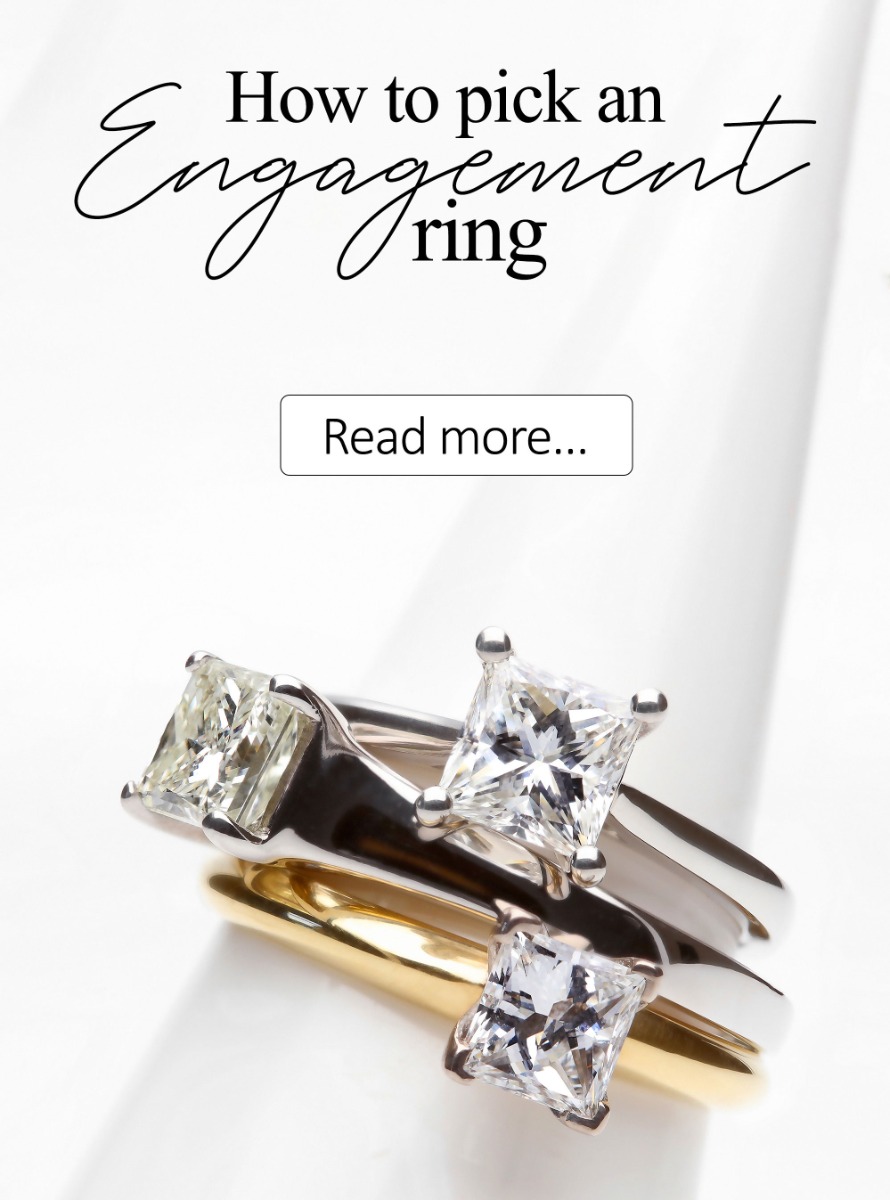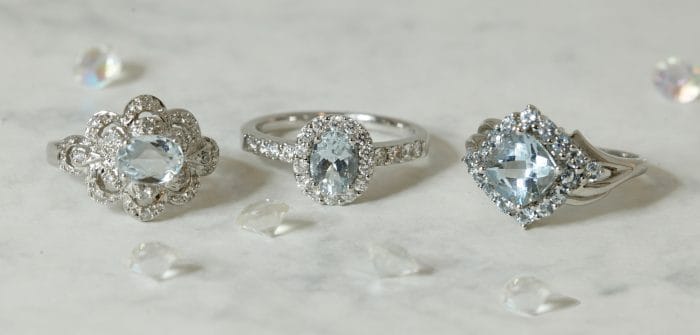If you were born in March, you will, of course, be aware that your birthday month marks the beginning of spring. It’s a month of little lambs and fluffy ducklings, daffodils, Easter eggs and an excuse for fancy dress (World Book Day).
But what you might not know is that March is the month of the Aquamarine – a beautiful sea coloured stone with properties of happiness and understanding.
The word aquamarine, unsurprisingly, comes from the Latin for seawater and the gem itself has been treasured since ancient times. Back then it was believed to keep sailors safe at sea and retain tranquillity in the oceans. So even though the more vibrant blue stones have been the most popular for a while, those in the shade of sea-green were seen as more valuable in the centuries past.
There have been many legends surrounding aquamarine throughout history. It was believed to bless the wearer with foresight, bravery, joy, intellect and youth at one time, which sounds pretty good to us! It has also been described as a healing stone, remedial for anxiety and, in the Middle Ages; it was thought that an Aquamarine could diminish the effect of poisons and toxins.
Within the silvery web of folklore, an aquamarine stone was also thought to enhance the happiness of a marriage. So one of our Aquamarine set rings could be the perfect choice for an engagement or wedding band!
The stone is a member of the beryl family and, as with most of the beryl variety; aquamarine forms large crystals and provides us with gorgeous, fashionable gems. Beryl gems such as aquamarines are one of the easiest stones to polish. And they’re particularly clean and well-formed which makes them especially valuable – not to mention stylish.
The best of them combine high clarity with crystalline transparency and blue/turquoise tones. Its colour is usually a pale greenish blue, not unlike the ocean. A large number of aquamarines are prised from the ground with this greenish tint already there, though heat treatment can deepen the blues in the colouring and transform the turquoise to azure. The heat treatment is simply heating the stone to 375 degrees centigrade, and from this temperature the green hues can be eclipsed. This is a very common process and has been done often to create a pure blue stone. It does seem, however, that the green tones are gaining popularity again recently so it may not be as widely used in the near future.
These beautiful stones get their striking colour from traces of iron and the highest quality ones come from Brazil. Other localities include Nigeria, Pakistan, Afghanistan India, and Russia. A dark blue variety is found in Madagascar.
An emerald is actually the green/aqua variation of the same mineral as Aquamarine.
Unlike diamonds, carats do not affect the price of an aquamarine and instead clarity and depth of colour can change the worth.
So, if, like us, you think that an aquamarine is a gem of the most exquisite colour. If you’re a March baby and want a beautiful piece containing your birthstone. Or if you’re superstitious and think the qualities influenced by aquamarine sound like some pretty amazing effects – one of our aquamarine pieces could be the perfect new addition to your jewellery set. Browse our stunning collection here.













